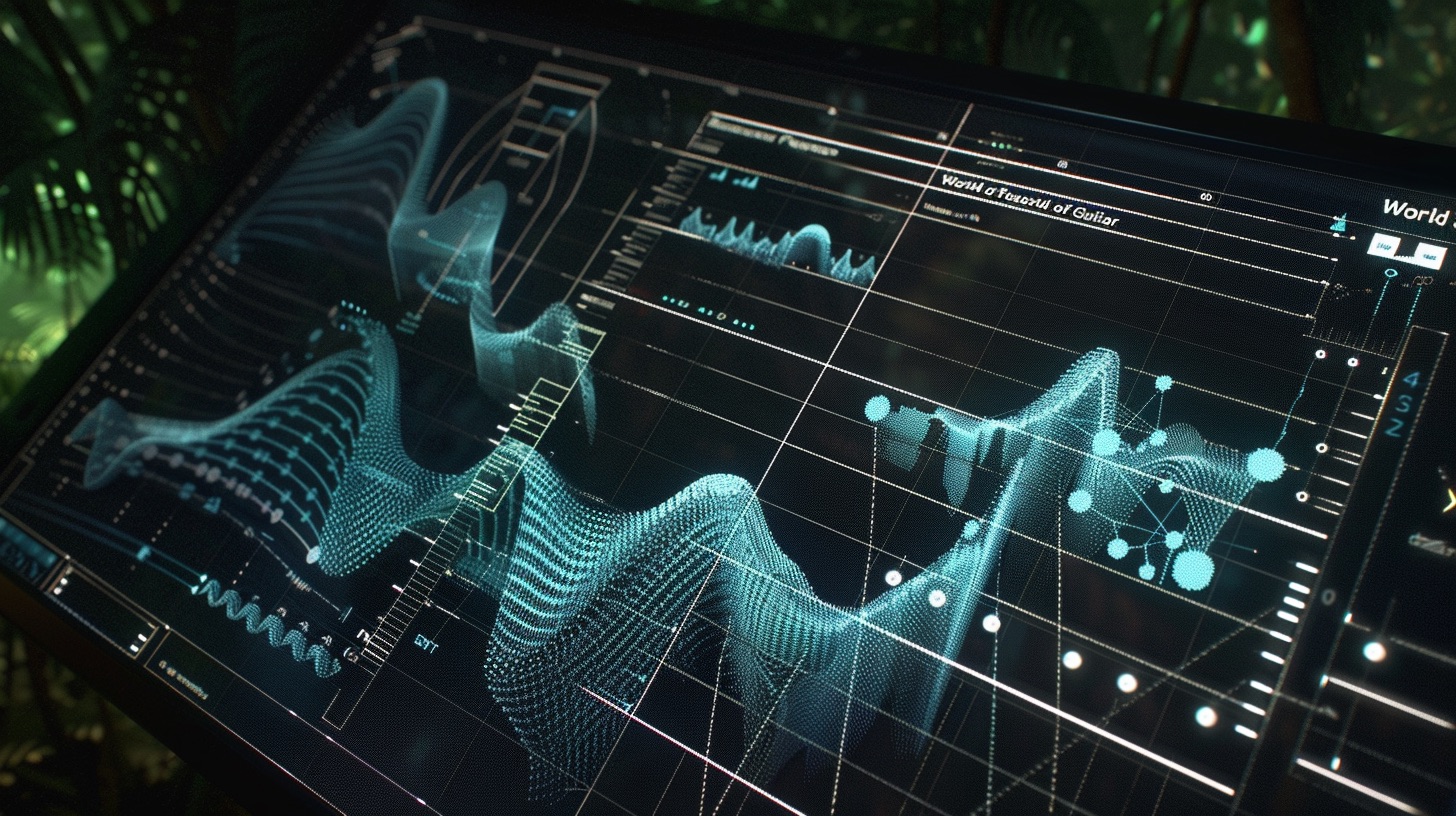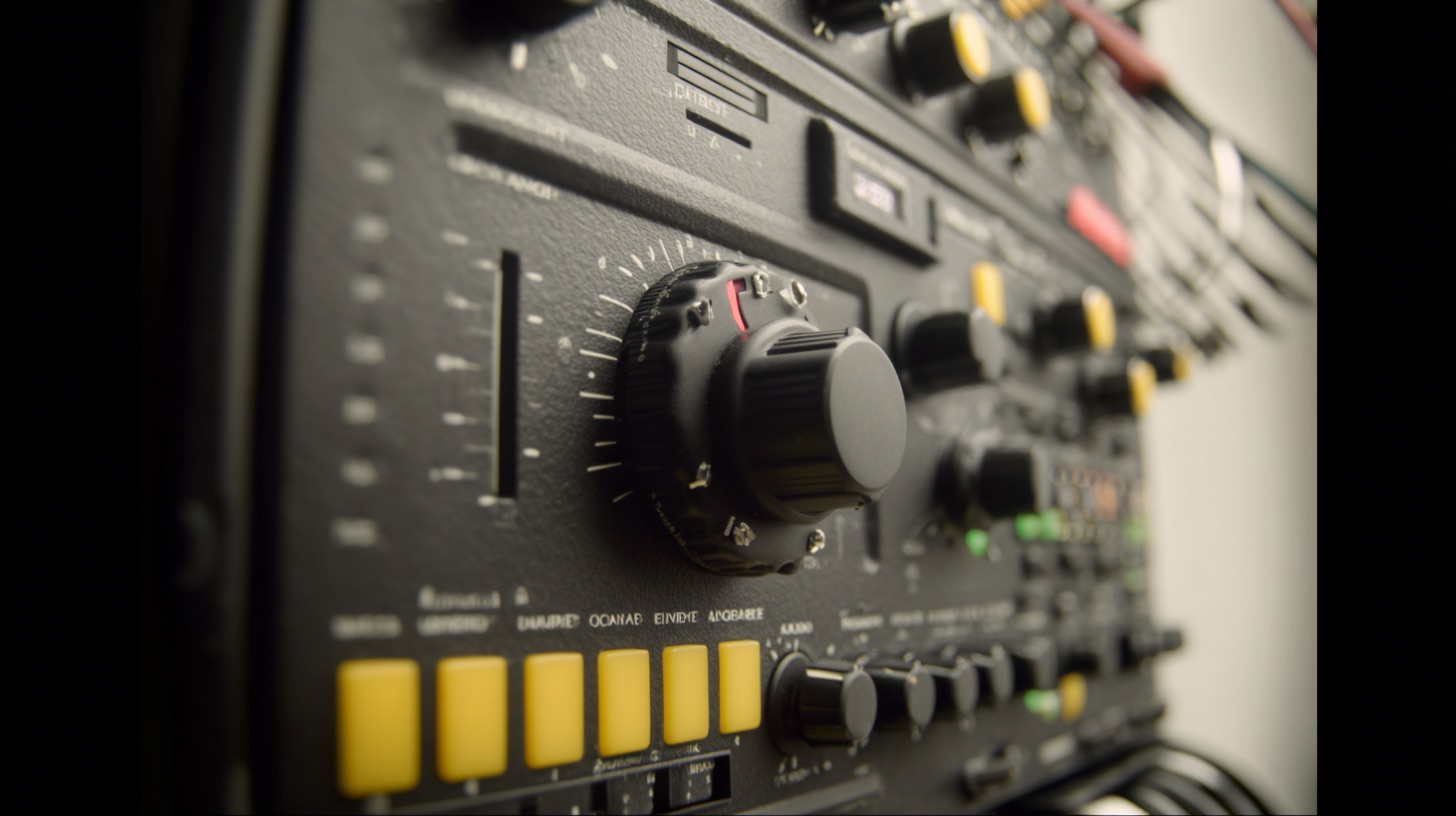
Neural DSP Nano Cortex: Dialing in sick metal guitar tones
Nail The Mix Staff
Modern metal guitar. For some, it conjures images of seven, eight, even nine-string guitars tuned to oblivion, chugging out open-string riffs. And yeah, extended range instruments and low tunings are definitely part of the landscape. But if you think that’s the whole story, you’re missing the intricate, pulsating core of what truly makes contemporary metal guitar so devastatingly effective.
We’re talking about a level of precision, technicality, and technological integration that goes far beyond surface-level observations. Think of it as the "Nano Cortex" – the hyper-detailed, incredibly refined control center behind today's cutting-edge metal guitar sounds. It's not about one magic plugin or a single technique, but the sum of countless microscopic adjustments, informed choices, and a relentless pursuit of perfection in playing, gear, and mixing.
Let's peel back the layers and explore this "Nano Cortex," moving beyond the clichés and into the actionable details that separate the modern masters from those just scratching the surface.
Beyond the Surface: What Truly Defines Modern Metal Guitar?
It's easy to get hung up on the low tunings or the sheer number of strings. But as Eyal Levi often points out, those are the "lowest hanging fruit observations." The real essence of what truly defines modern metal guitar isn't just about sounding heavy; it’s about pushing boundaries in every conceivable way.
We're seeing a fusion of techniques previously on the fringes of metal. Think about:
- Hybrid picking: Blending pick and fingers for complex patterns and textures.
- Thumping: Percussive techniques borrowed from bass wizards, adding a new rhythmic dimension.
- Flamenco-style rhythms: The kind of intricate, rhythmic wizardry you hear from players like Tim Henson of Polyphia, woven into a metal context.
Harmonically and rhythmically, metal has reached collegiate-level sophistication. Polyrhythms, metric modulations, and complex meters that once baffled even seasoned players are becoming part of the standard toolkit. The bar for musicianship has skyrocketed, and even local bands today often possess technical abilities that would have been astonishing a couple of decades ago. This isn't just about flash; it's about expanding the expressive potential of the instrument.
The "Nano Cortex": Precision Forged by Modern Tools
So, what fuels this leap in precision and complexity? The "Nano Cortex" isn't just about raw talent; it’s about how modern players leverage the incredible tools and information at their fingertips to achieve an unprecedented level of refinement.
The Internet & Your Neural Network for Guitar
Forget relying on luck to find a good local teacher. The internet has democratized guitar education:
- Learn from the Masters: You can find high-definition lessons and playthroughs from your guitar heroes on YouTube, often breaking down their techniques in excruciating detail. Want to analyze someone's picking motion? You can do it in 8K if you want!
- Self-Analysis Power: Affordable DAWs (Digital Audio Workstations) like Pro Tools, Logic Pro X, Cubase, or Reaper mean you can record yourself constantly. Scrutinize your waveforms, listen back critically, and identify areas for improvement with pinpoint accuracy.
- Smarter Practice Tools: Amps like the Positive Grid Spark or the headphone-based Spark NEO are game-changers. Connect via Bluetooth, dial in tones on your phone, stream backing tracks from YouTube or Guitar Pro, practice silently to a click track – all without a web of cables. This makes focused, analytical practice easier than ever.
Gear That Gets Granular: Fine-Tuning Your Rig
Modern gear isn't just about "more gain." It’s about specialized tools designed for the extreme demands of contemporary metal, allowing for that "nano-level" control:
- Tuning Stability: For those ultra-low tunings, an Evertune bridge is practically a modern necessity, keeping you perfectly in tune no matter how hard you hit the strings or what the temperature is.
- Pickup Precision: Pickups like Fishman Fluence models are engineered for clarity and articulation, even with extreme gain and low tunings. They offer multiple voicings, giving you more sonic options right at the source.
- Informed Choices: Today’s players are incredibly knowledgeable. They’re not just buying gear based on hype; they’re researching, experimenting, and finding what specifically works for their style and tuning. They understand the signal chain from string to speaker (or IR).
- Accessibility: Even factory model guitars from brands like Ibanez, Schecter, or ESP LTD offer incredible quality and playability at prices that are far more accessible than high-end instruments of the past. The gear barrier is lower than ever.
Building Your Nano Cortex: Actionable Techniques
Understanding the "Nano Cortex" is one thing; building your own is another. It comes down to focused effort on the details that truly matter.
The Rhythmic Backbone: Your Picking Hand is King
If there's one area where modern metal has evolved monumentally, it's rhythm. Your picking hand is the engine room. Eyal Levi often emphasizes this: if you want to sound modern, nail your rhythm.
- Downpicking Stamina & Speed: Think James Hetfield on steroids. Work up your relentless down-picking.
- Upstroke Consistency: Often overlooked, but crucial for smooth, even alternate picking.
- Master Rhythmic Patterns: Gallops, reverse gallops, complex syncopations – make them second nature.
- Tremolo Bursts: Explosive, controlled bursts of speed, perfectly in time.
- Polyrhythmic Prowess: Learn to count and play in odd time signatures, and layer different rhythmic patterns.
- Muting Mastery: Not just palm-muting chugs. We’re talking precise rhythmic muting, using fretting hand mutes and pick hand techniques to create tight, percussive riffs. Think about incorporating techniques like harmonic rakes for added texture.
This relentless focus on rhythmic precision is a cornerstone of the "Nano Cortex." It's about making every note count, with machine-like accuracy. If you're looking to truly transform your playing and mixes, diving deep into these rhythmic fundamentals is non-negotiable. For a comprehensive approach to crafting powerful, modern metal sounds from the ground up, check out how the pros do it and unlock your sound beyond just presets.
Deconstructing Bad Habits: The Rewiring Process
Many players hit a technical ceiling because of ingrained bad habits, especially in their picking technique. The best modern players aren't afraid to take a step back to leap forward.
- Identify the Bottleneck: Record yourself. Watch your hands. Get feedback from better players (easy to do online now). Is your pick angle off? Is there wasted motion?
- Embrace the Grind: Fixing deep-seated habits means you'll likely sound worse before you sound better. It takes patience and deliberate practice.
- Leverage Modern Tools: Slow-motion video analysis of your own playing compared to elite players can be incredibly revealing. Online coaching provides expert eyes.
This willingness to deconstruct and rebuild is a hallmark of musicians who truly embody the "Nano Cortex" – a commitment to continuous improvement, even when it's uncomfortable.
The "Nano Cortex" in the Mix: Translating Precision to Power
That "nano-level" precision in your playing and gear choices lays the foundation for a killer mix. Here’s how that detail translates into a powerful, polished sound:
Surgical EQ for a Sharper Sound
Forget just scooping mids and calling it a day. Modern metal EQ is about surgical precision to enhance clarity and punch without sacrificing aggression.
- Taming Fizz: That nasty, high-frequency "static" or "bees in a can" sound? It often lives in the 5kHz-10kHz range (or even higher). Use a parametric EQ like FabFilter Pro-Q 3 or your stock DAW EQ with a narrow Q (bandwidth) to pinpoint and gently attenuate these offensive frequencies. This cleans up the tone immensely without making it sound dull.
- Articulating the Attack: Precise boosts in the upper mids (e.g., 2kHz-4kHz) can bring out pick attack and definition, especially in fast, technical passages.
- Low-End Clarity: Instead of just boosting bass, use high-pass filters to cut unnecessary sub-bass rumble (often below 60-80Hz on guitars) and low-shelf EQs to shape the chug.
For more in-depth strategies on using EQ to shape your metal guitars, dive into our EQ strategies for mixing modern metal.
Dynamic Control: Tightening the Low End & Punch
Uncontrolled low-end can turn a powerful riff into a muddy mess. Modern mixes often employ sophisticated dynamic control.
- Multiband Compression: Tools like FabFilter Pro-MB or Waves C6 allow you to compress specific frequency bands. This is invaluable for taming "flub" or "woofiness" in the low-mids of palm-muted guitars without affecting the snap of the higher frequencies. You can set a band around 100-250Hz to clamp down only when those chunky notes get too boomy.
- Transient Shaping: Plugins like SPL Transient Designer or Neutron Transient Shaper can enhance or reduce the attack of your guitar, helping it punch through or sit back in the mix as needed.
Mastering compression is key to a loud, punchy, yet clear metal mix. Learn the metal compression secrets beyond just making it loud.

100+ Insanely Detailed Mixing Tutorials
We leave absolutely nothing out, showing you every single step
The Live Advantage: Consistent Precision On Stage
The "Nano Cortex" extends to the live arena. Technology allows bands to replicate studio precision on stage:
- Modeler Power: Kemper Profilers, Fractal Audio Axe-Fx units, or Neural DSP Quad Cortex setups allow guitarists to automate patch changes, EQ settings, and effects for every section of every song. This means the perfect tone, every time.
- Perfect Monitoring: In-ear monitor systems (like those from Midas or Behringer) with personal mix capabilities (e.g., Behringer P16-M) mean every band member hears exactly what they need to. If you, the guitarist, want just your guitar, bass, and a loud click, you can have it. This drastically improves playing accuracy and tightness.
Bands that leverage this tech sound tighter, more powerful, and more consistent, whether they're playing cutting-edge djent or a retro thrash style.
Embrace the Evolution: Your Path to a Modern Metal Sound
The "Nano Cortex" isn't some mystical unattainable concept. It's the direct result of dedicated musicians taking full advantage of the tools, information, and learning opportunities available today. It's about a relentless pursuit of precision in every facet of your music – from the way your pick hits the string, to the specific gear you choose, to the way you sculpt your tone in the mix.
Stop romanticizing the past or being intimidated by change. The modern era offers unprecedented potential for growth.
- Record Yourself Constantly: Be your own harshest critic and biggest fan.
- Embrace Rhythmic Training: Make the click your best friend.
- Be Deliberate with Gear: Understand why you're choosing a piece of equipment.
- Never Stop Learning: There's always a new technique, a better approach, or a deeper understanding to gain.
These principles are exactly what you see the world's top metal producers applying every day. Imagine looking over the shoulder of producers like Jens Bogren, Will Putney, or Nolly Getgood as they build these colossal, intricate guitar tones from raw DI tracks, explaining every EQ move, every compression setting, every bit of bus processing. Nail The Mix offers exactly that – a backstage pass to see how the "Nano Cortex" of a professional metal mix is constructed, month after month.
So, dive in, get granular, and start building your own Nano Cortex. The power to create truly modern, impactful metal guitar tones is more accessible than ever before.
Get a new set of multi-tracks every month from a world-class artist, a livestream with the producer who mixed it, 100+ tutorials, our exclusive plugins and more
Get Started for $1




